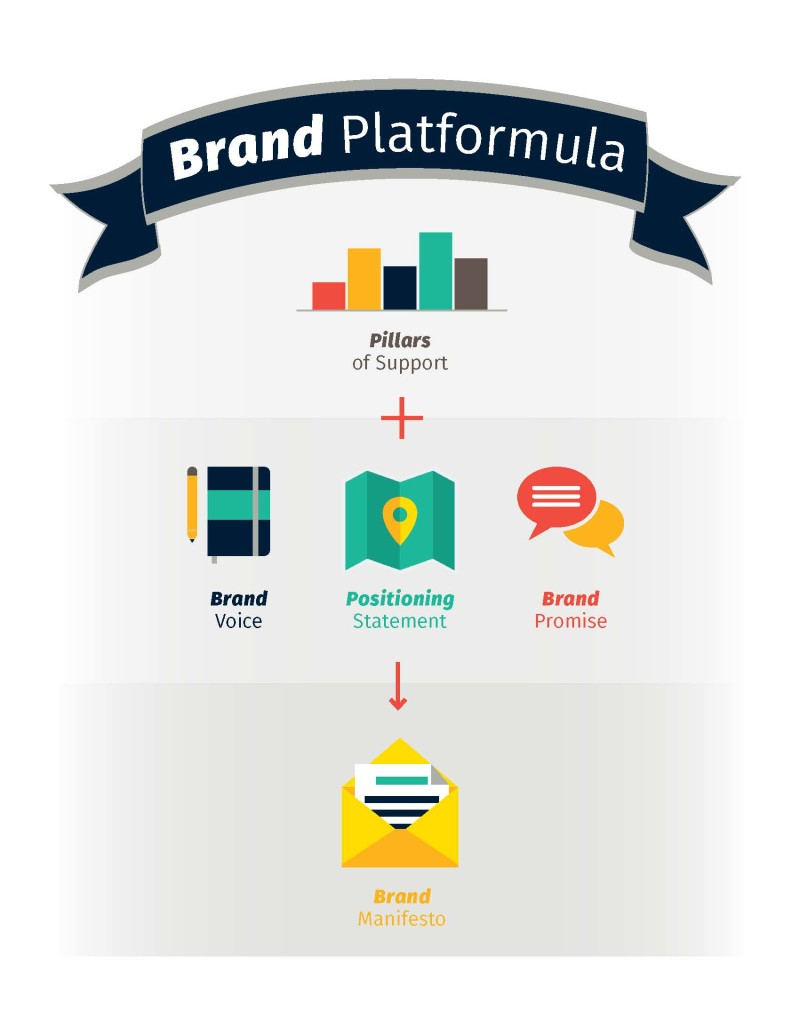Develop a more powerful brand with a genuine brand platform
Brand platforms are all about capturing the existing spirit of your company. The personality, goals, and driving force of any brand should be somehow expressed in a genuine brand platform.
Start with Buy-In
The idea of branding can often be disconcerting. In an organization with a strong community, new brand imagery or language is sometimes difficult to roll out if stakeholders feel a brand has been forced upon them. Genuine brand platforms will come from purposeful feedback, interviews, and conversations with all types of internal stakeholders. While there is never enough of it, take your time in developing a first brand platform.
Then, allow it to be a living document that changes when necessary (we’re talking slight updates every couple of years, as the vision and direction of your company shift). The brand platform of Firefox is quite exceptional (great content, anyway … I could take or leave the visual expression of their brand) and I’ll be using it as a case study for this blog.
The Brand Platformula- What is a Brand Platform
I like to think of the elements below as a basic formula for writing a great platform - a brand communication framework. You may choose to include extra elements or exclude sections that don’t fit with your company. But, this is a great place to start.
Pillars of Support (Defining your brand )
Depending on which expert you talk to, there can be five and up to ten pillars of support for your brand platform. I find that it’s easier to think in terms of what defines and shapes your brand. Similar to a person's style, a brand has specific elements that give it uniqueness.
Commonly these pillars include:
- Purpose
- Perception
- Competitive Position
- Personality
- Promotion
- and may include many others
The problem with brand pillars is that most people have different opinions about what is most important. The purpose of the brand pillar is to help us define and guide the brand in all of its various expressions.
A simple way to develop these defining characteristics is to think about what truly sets you or your organization apart from the competition. These can be practical or factual things, like being a non-profit in a for-profit industry. But, these can also be conceptual, like having a challenger spirit. Be picky. Write these as a single word (or two, if you must). Then, expound on each of these elements with a single sentence.
They are useful if you view your brand pillars as the guardrails, the directional signs, and line dividers on the highway. They guide the way that you drive and can bring uniformity to the way that multiple brand actors apply the brand. But just like those road safety guides, they are artificially defined based upon someone's best insights, and may not reflect the way your buyer interacts with your brand (you've seen all the ways people drive:).
Just because you have a checklist for your brand that includes pillars of support, it doesn't mean your brand will have a soul or resonate with your target audience.
How pillars of support force us to wrestle with differentiators
The idea of defining a brand (that's what a brand platform is designed to), can't be effective if it is separated from the actual experience of the buyer. What leads to the growth of a company is how the buyer interacts with the company. This experience is the actual brand, no matter what kind of platform has been developed.
When the brand platform is developed outside a deep understanding of the buyer experience, the brand will remain essentially invisible. When the brand aligns with the journey of the buyer, it not only becomes useful, but effective.
A key element of pillar development is understanding what makes the company truly unique. This is difficult to determine in the abstract, or as a detached planning exercise because it requires an intentional process that must be focused on the buyer journey.
Brand Promise
In short, what are you promising to your customers? This statement should be informed by what makes you special as a company, yet be expressed in a single sentence. Firefox puts it likes this: “Your brand promise is a single statement that crystallizes what you’re all about, what makes you special, what makes you unique—in short-hand form. It is your promise to those who choose your products and services, and support your brand.” This is not only a promise about what you are delivering but how you deliver it. Far from a marketing line used in any advertisement, your brand promise should become a mantra around the office--helping employees live out the brand in their daily work.
Positioning Statement
A positioning statement should both compare and contrast to your competitors. This is the essence of what determines whether your company stands out or remains invisible.
Define who you are in comparison to similar companies, then point out what sets you apart from others in the industry. Are you a small, liberal arts university? Or, are you a technology startup? Great--then say so! But, follow it with why you’re not just any tech startup. The themes in your positioning statement should fall in line with your brand promise and pillars of support.
Use this as a guide: For (target market) who (have the following problem), (brand) is the (frame of reference) that provides (benefit/point of difference) because only (brand name) can (reason to believe). Put this key concept into your brand communication framework.
Brand Voice (a.k.a. brand personality traits)
If your brand were personified, how would you describe that individual? The tone of marketing and branded writing will pull from these attributes, so make them unique and distinguishable. And, like anyone you want to spend time with, describe a well-rounded person. You wouldn’t want Unique, Quarky, Out-Spoken, and Eclectic to describe your brand voice because you’ve just described someone that no customer could relate with. You’ll notice that Firefox chose six personality traits. I’d venture to say that six is a lot, and might make it difficult to define a focused writing style. Also, note that they included the word “human.”
Brand voice is often brought up in the development of graphic brand elements. It is useful in developing the look and feel of assets and websites. This is also one area where branding goes off the rails. We can believe that the look and feel of something is the primary driver of effectiveness. That myth can cause us to miss the reality that it is buyer experience that determines effectiveness, not just the look and feel.
Brand voice is the personality that a buyer should experience as they interact with everything about the brand online or in person. That unique personality helps you to stand out above the competition.
Brand Manifesto
Why a manifesto? A manifesto is not only a public declaration, it’s a proclamation about your beliefs, aims, and ideals. These paragraphs should be written to the audience and should mirror all of the elements in your brand platform. Be sure your manifesto is written using the brand voice you’ve described. Talk about your position in the market, what makes you different, and why. Then, declare your promise to the audience in a way that is uniquely your brand.
A Brand Platform for All
Remember to include diverse groups of people as you develop your brand platform. It's designed to serve as a brand communication framework. During brainstorming, allow people to express themselves in long or short form. Then, use the plentiful words and ideas to draft a concise set of ideas. This is, in essence, the foundation of all your marketing messages but should not be used in lieu of creative campaign headlines. Writers should be able to pull language from anywhere in the brand platform to stay on-brand. But, for your marketing team, it’s only a starting point for campaign brainstorming. Don’t confuse writing your next ad phrase with developing a meaningful brand platform.







.jpg)
.jpg)